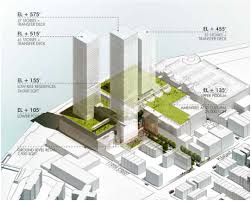NYC CPC ULURP No. 170359 (A) ZRM Proposal Testimony Against the East Harlem Rezoning Plan
Submitted to the City Planning Commission by Roger Hernandez, Jr. on August 23, 2017
The East Harlem community never invited this MIH QZM Amendment Proposal, and does not support it.
This proposal is a horrifying displacement plan of East Harlem’s poor masked as a Trojan Horse being pushed by the NYC Administration of Mayor William de Blasio.
In fact, the CB11 voted against this plan (with 2 abstentions) in November of 2015, and again in 2017. Manhattan Borough President Gale A. Brewer does not support this plan, and now it is NYC CPC’s prerogative to kill this gentrification plan.
East Harlem’s 181,236 majority of residents live mostly with incomes of less than $50,000.00 (see Exhibit Figure 3-3 of the East Harlem Rezoning DEIS Report), with a Median Household Income of $36,064.00 (Table 3-4) that makes this area decidedly poor and vulnerable.
That is quite remarkable for a special vibrant community viewed as The Working Man’s Manhattan by Columbia U. School of Architecture, Planning and Preservation, 2011. Kindly put this plan to rest with your rationale considerations.
Under the worst case scenario, The Mayor’s Rezoning action will escalate the burden against East Harlem’s low-income population by establishing 70% of the total available housing for households earning more than $78,300.00 (Table 3-8, pg. 3-22 of the DEIS Report) Ironically this plan is being waxed as a “Mandatory Inclusionary Housing Plan” for East Harlem while it actually does not present any level of “affordability” for its own residents, nor is it “mandatory”, as it is actually “exclusionary”- discounting a majority of East Harlem’s families, friends and neighbors because of their own low income status.
This aggressive targeting of East Harlem’s current residents is viewed as a racist ploy to displace Latino and African Americans out of Manhattan, and out of New York City. How could it be viewed otherwise?
NYC Governmental policy after WWII created the legislative conditions that allowed landlords diminishing profits to cut back on the necessary maintenance and operations to preserve affordable housing, creating NYC’s slums during the 1950’s leading to the total deterioration of its vital affordable housing stock.

That was deplorable. It was our nation’s inner city Community Based Organizations (CBOs) of the 1960’s that forced governmental action to rehabilitate our communities’ with vital financial assistance that was sucked out by fleeing landlords and more so by progressive legislation and proactive agency personnel committed to NYC’s future supporting its neighborhoods, it’s communities, and moreover its residents. That was a hard lesson that we will not soon forget.
Mayor Edward I. Koch created an ambitious 10 year $5.1 Billion plan in 1985 converting derelict properties to build and rehabilitate 252,000 low and moderate-income housing units, now viewed as NYC’s affordable housing stock of today was successful because of its private/ public partnership with local community nonprofit housing organizations who advocated, built and now manage this affordable housing resource.
NYC’s public funds were used effectively by its community based nonprofit entities. Economically depressed slums soon became home to hard-working families who rebuilt NYC’s communities of color with a diversity of ethnic flavors catering to its vibrant pulse, becoming great again.

Now, Mayor de Blasio is proposing a $48 Billion Plan geared to Private For Profit Developers to build 250,000 apartments that will rent for more than 75% of household median incomes within communities too poor to be able to afford to participate in his big plans. Not for profit housing groups are not invited to participate based on the high degree of public land being gifted to few developers connected to the Mayor’s administration.
This is a rip off of precious public funds now being offered to the profitable NYC private real estate industry to savor the vibrant healthy communities created by our not for profit CBOs. The premise of all this proposed exorbitant NYC public money and relaxed zoning to create structures three times larger than now, has exacerbated a speculative market that is now way out of control. Proposed government policy has created this awkward economic/ legislative condition – again. What have we learned since WWII? How can we support legislation that is not geared for us and is designed to fail us?








